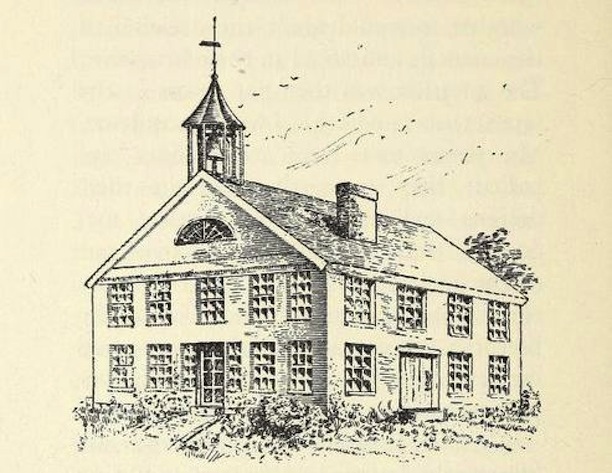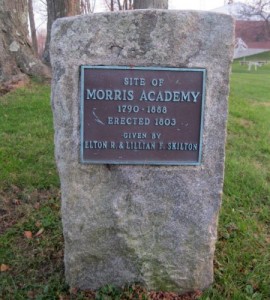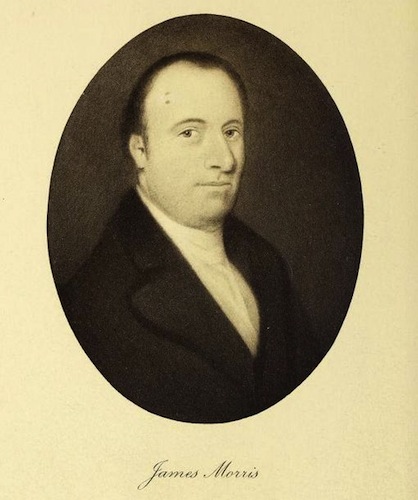By Peter Vermilyea
A small marker and the remnants of a foundation mark the location of the Morris Academy, a landmark co-educational institution.
The Academy was the brainchild of James Morris III, who was born on January 19, 1752, in South Farms (which, in 1859, was renamed Morris in his honor). Morris’ father James was a deacon, and the son harbored hopes of entering the ministry. An enthusiastic reader, young James routinely traveled to Bethlehem to borrow books from that town’s library. His education, which began with these library books, was guided by three remarkable teachers.
At 18, Morris began studies under Bethlehem’s Dr. Joseph Bellamy, one of the leading theologians of the late 18th century. It is reported that Morris also studied under Nathan Hale, before enrolling at Yale. While at Yale, Timothy Dwight, later president of the university and one of the leading figures in —- educational history, served as Morris’ tutor.
Following his graduation, Morris returned home to help on the family farm, teach students in Litchfield, and ponder a future in the ministry. The Revolutionary War, however, got in the way. He served first in the Connecticut militia, then in the Continental army, fighting on Long Island, at White Plains, and at Germantown, Pennsylvania, where he was captured. Upon receiving parole, he hurried to Yorktown, Virginia, where he served Alexander Hamilton during that climactic battle of the Revolution.
After the war he returned home and married Elizabeth Hubbard, with whom he raised five children. His fellow townspeople elected him both justice of the peace and a selectman. By 1790, however, when children began regularly showing up at his door, Morris put aside his ideas about the ministry and looked instead for a career in education.
School Champions Co-education
Rare for his time, Morris accepted both boys and girls as students. This sparked significant discussion, as many believed that education would cause women to lose sight of their more traditional roles. In 1794, a town hearing was held about the situation, and any charges against Morris were dismissed.
By 1800, Morris’ school had grown so large that a formal structure was needed. Wealthy subscribers were enlisted from the area to subsidize the $1,200 cost of the building, which opened on November 28, 1803. (The building stood on the property where the James Morris School stands today. By that time, Morris had educated students from all of the New England states, except Rhode Island, as well as New York, New Jersey, Pennsylvania, Maryland, Virginia, South Carolina, Georgia, and the West Indies. He averaged between 50 and 75 students a year.
Morris died in Goshen in 1820 (he is buried in East Morris), but the school remained open until 1888. As Barbara Nolen Strong wrote in her 1976 book on the Morris Academy, “The Morris Academy is entitled to be called a pioneer institution because of its ‘open door’ policy in coeducation. It was not the first in the United States, not even in Connecticut, but none of the other early academies opened their doors as wide and kept them open as long. No other coeducational academy spread its influence so far.” In a fitting gesture to the impact of James Morris on the community, the town of South Farms changed its name to Morris in 1859.
Peter Vermilyea, who teaches history at Housatonic Valley Regional High School in Falls Village, Connecticut, and at Western Connecticut State University, maintains the Hidden in Plain Sight blog and is the author of Hidden History of Litchfield County (History Press, 2014).
Note: ConnecticutHistory.org does not edit content originally published on another platform and therefore does not update any instances of outdated content or language.











